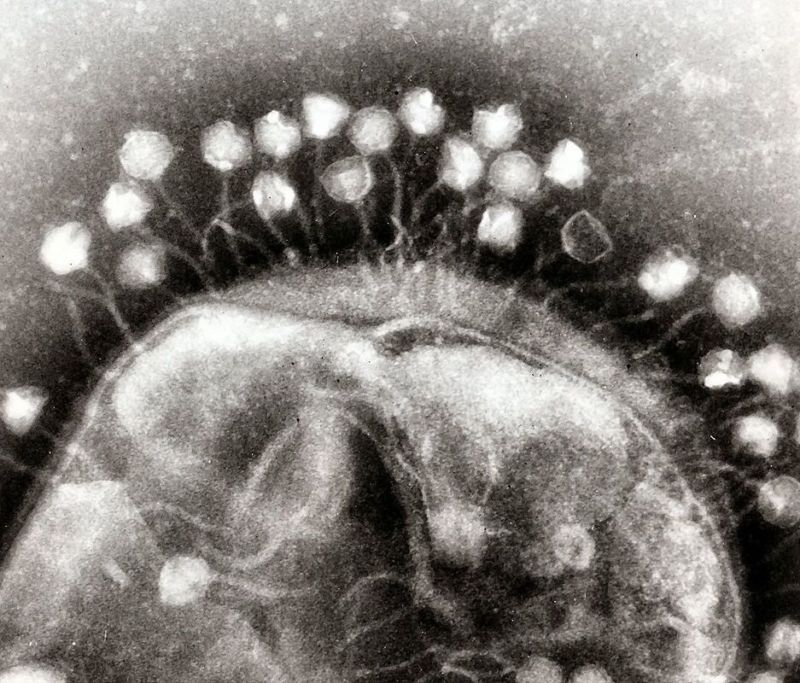Using a virus to kill what antibiotics can’t
Ars Technica » Scientific Method 2018-07-18

Enlarge / Phages on the surface of a bacterial cell. (credit: Dr. Graham Beards )
Due largely to overuse, we're at risk of seeing many of our antibiotics lose effectiveness, leaving us without a defense against a number of potentially fatal infections. People are taking a variety of approaches to dealing with this, like looking for combinations of drugs that remain effective, developing entirely new drugs, and trying to reform how we dispense these critical drugs. (Although the latter may be an impossible dream.)
There's another option that was under consideration even before antibiotic resistance had hit crisis levels: use something that makes killing bacteria part of its life cycle. Like other cells, bacteria often find themselves victims of viral infections, dying as new viruses burst out to infect their neighbors. If this happens out in regular ecosystems, people reasoned that maybe bacteria-killing viruses would also work in a pneumonic lung. But those maybes had always been accompanied by a long list of reasons why a virus wouldn't work. Now, a group of researchers has tested it on mice with pneumonia, and none of those reasons seems to be an issue.
Meet the phages
Viruses that specialize in infecting bacteria are often called bacteriophages, or simply phages. We've known of some of them from shortly after we started studying bacteria, since their spontaneous infections would leave open holes of what would otherwise be an even lawn of bacteria. We've studied a number of them in detail, and some of the proteins they encode have become key tools in our genetic-engineering efforts. And they're not simply oddities that strike when bacteria are forced to live in artificial lab conditions. Surveys of DNA obtained in environments from the deep ocean to the subways show that, wherever you find bacteria, you also find viruses that prey on them.